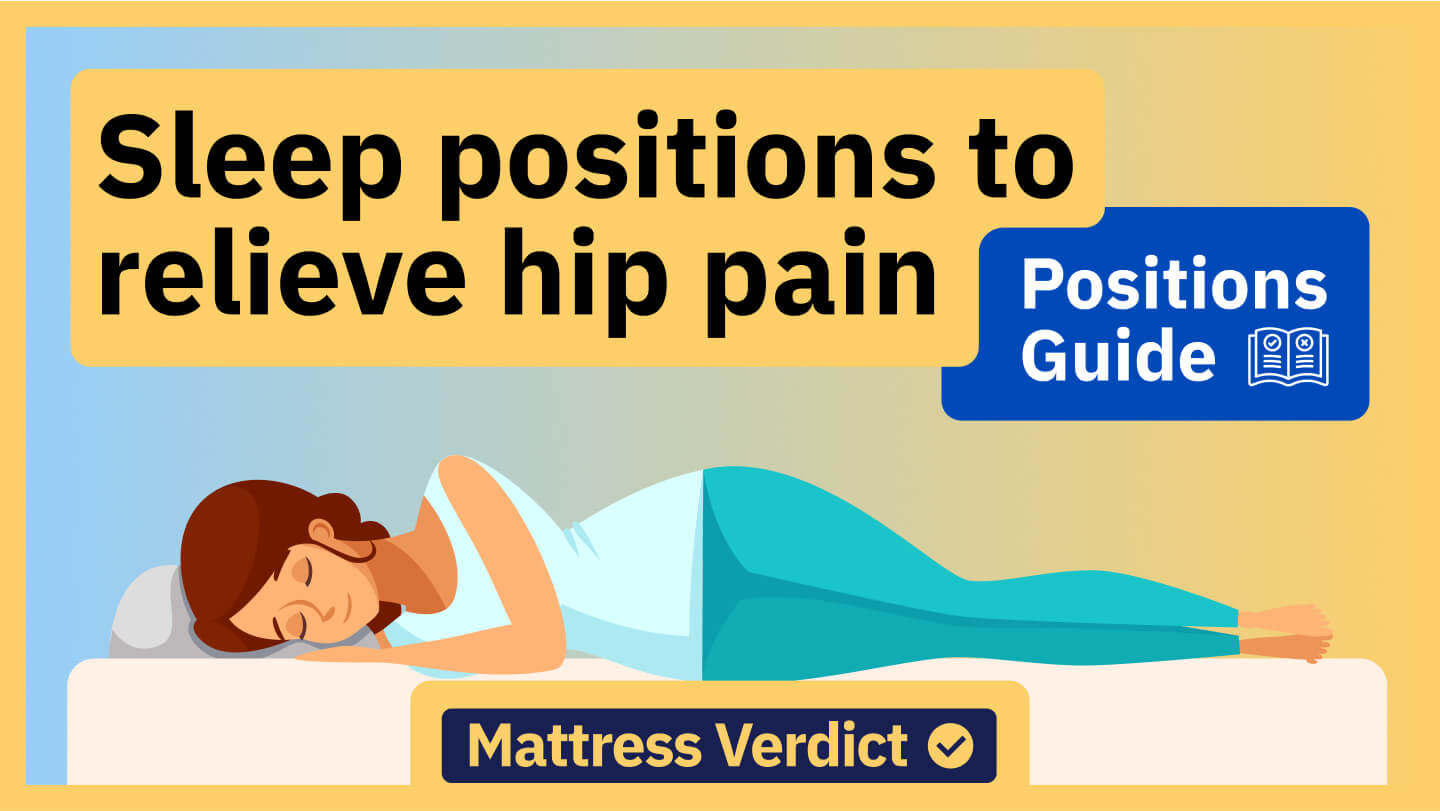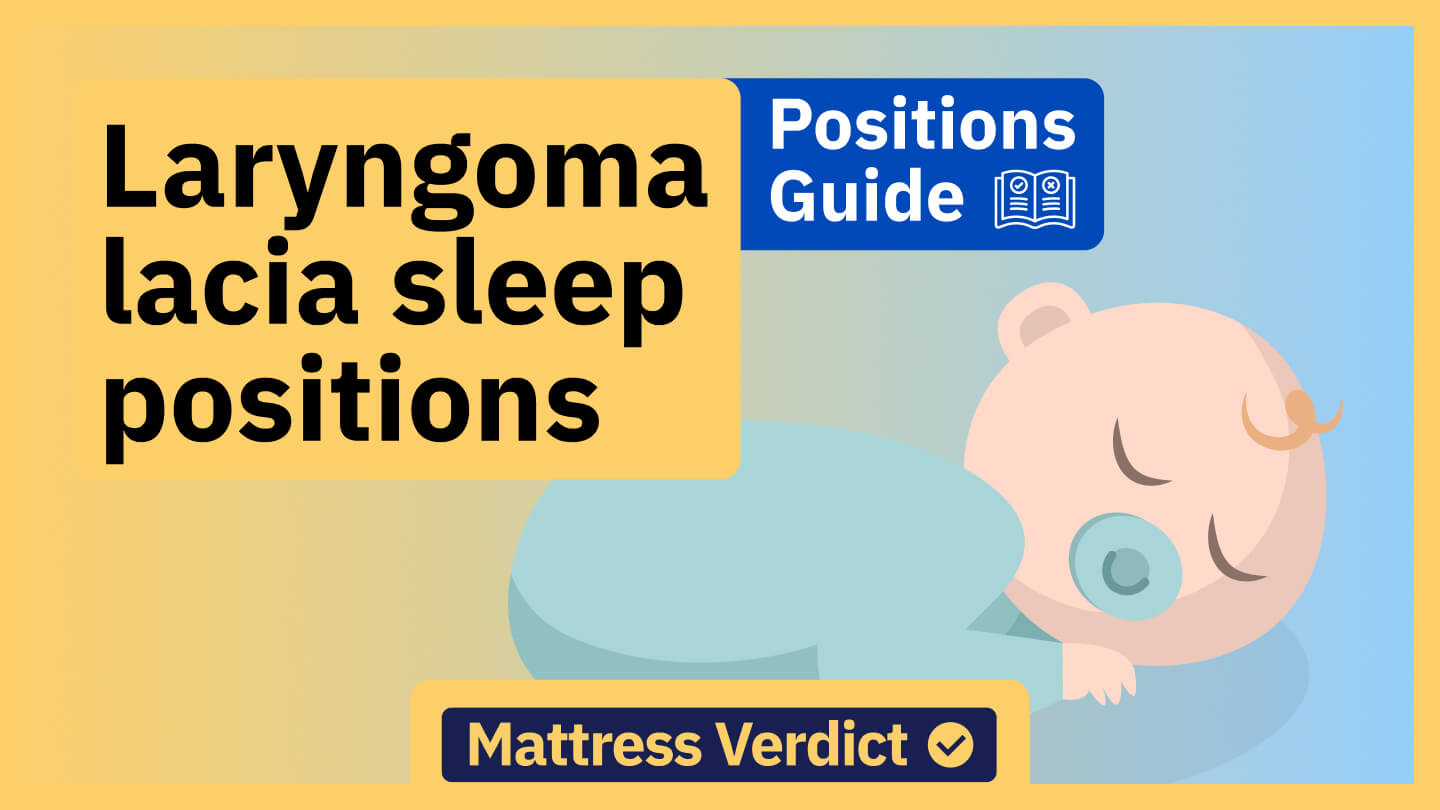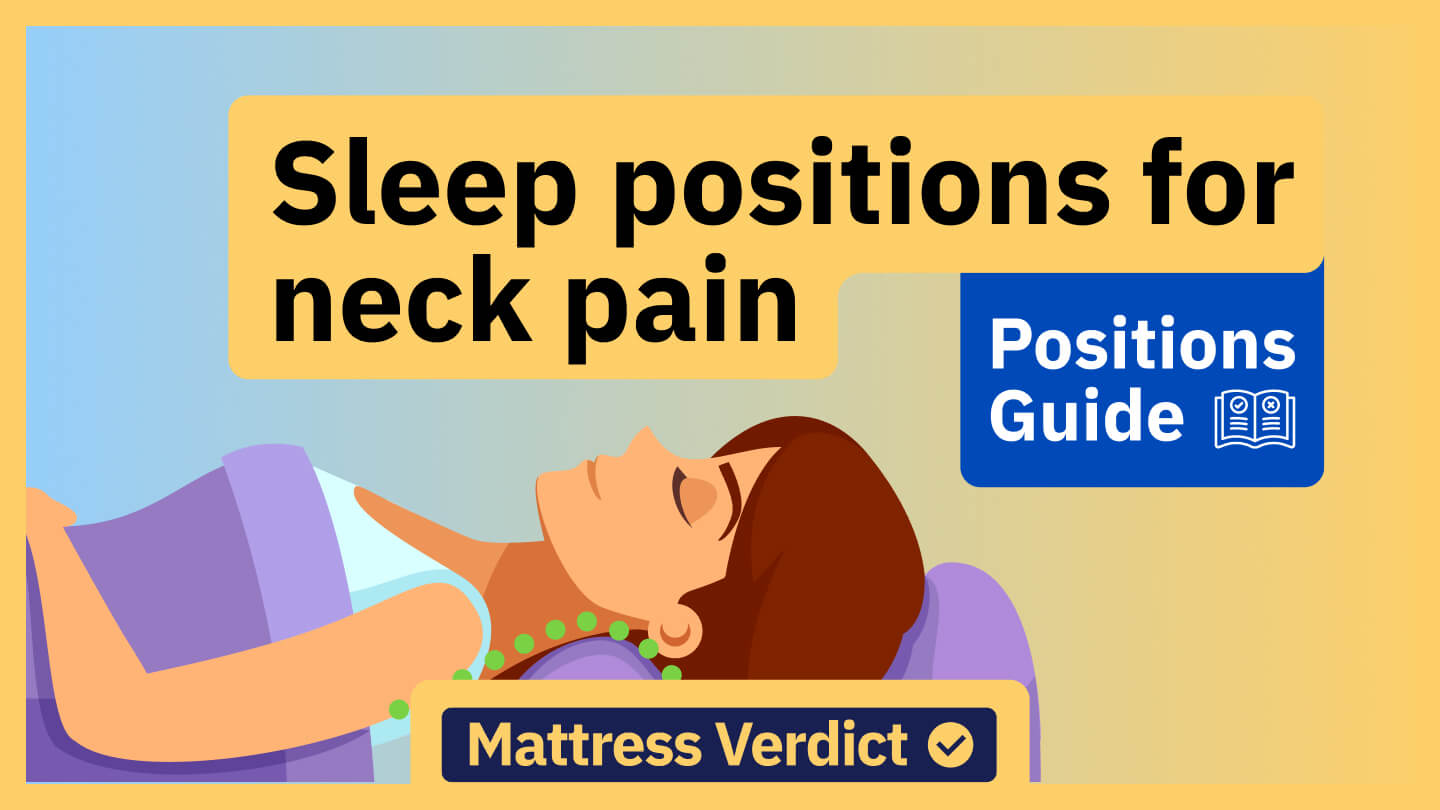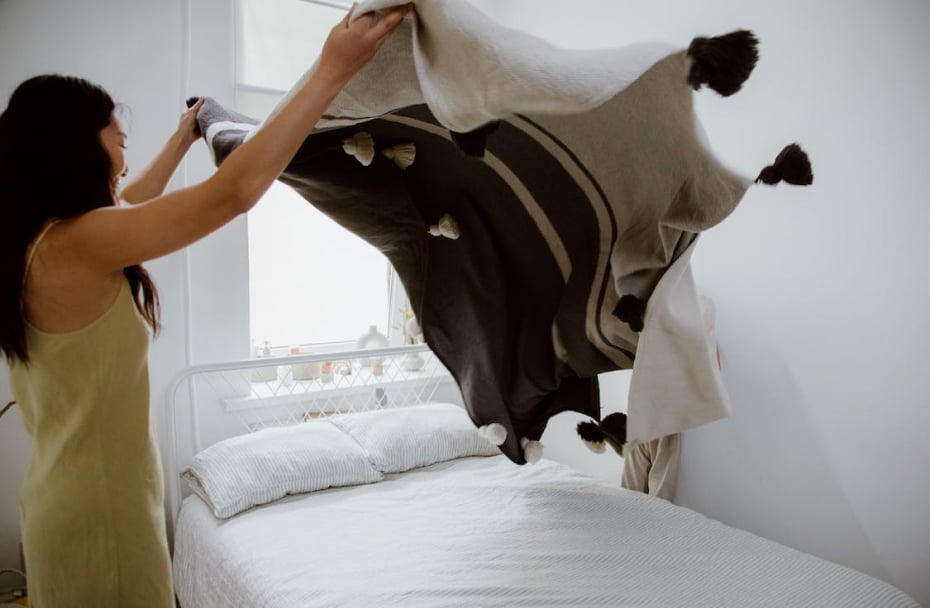

Everyone agrees that sleep positions directly influence our comfort and sleep quality; however, to know the best sleeping positions for sleep apnea, one must understand that repetitive breathing cessation during sleep is known as sleep apnea.
The two main types of sleep apnea are Central sleep apnea (CSA), which occurs when signals needed for normal breathing are not sent by the brain to the muscles that control breathing, and Obstructive sleep apnea (OSA), which occurs due to narrowing or blockage of upper airways.
Between CSA and OSA, the most commonly found among both types is OSA. Sleep apnea is also influenced by sleep position, and one of the best sleeping positions for sleep apnea is a side position with a straight back. Accurate sleeping positions lower the severity of sleep apnea and reduce snoring.
Key Takeaways
- Sleep apnea occurs due to breathing pauses during sleep.
- The most common type of sleep apnea is obstructive sleep apnea.
- Signs of sleep apnea can be lessened by sleeping in the correct position.
- Sleeping on the back worsens the symptoms and causes airway obstruction.
- Keep your head aligned with your spine and neck while sleeping in any pose.
What Are the Best Sleep Positions for People With Sleep Apnea?
When considering the best sleeping position for sleep apnea, one needs to follow the central idea of keeping your head aligned with your neck and spine. Top sleeping positions are mentioned below to tackle symptoms of sleep apnea.
Side Sleeping
Side sleeping is considered one of the best sleeping positions for sleep apnea because it lowers the breathing disturbance in patients suffering from either OSA or CSA. However, it is considered more beneficial for OSA patients.
Side sleeping is the most suggested position for people suffering from OSA by doctors as it aids in lowering snoring effectively. CSA patients can also relieve the symptoms with side sleeping as it allows better signal transmission from the brain to the lungs.
The tissues in the mouth and throat usually move where they can hinder airways when the person sleeps on their back; however, side sleeping helps prevent the tissues from blocking the airways.
In addition, this position aids in keeping the mouth closed with an elevated head that helps prevent sleep apnea. It would help to position your arms and hands on the side below your neck and face for the best sleeping position. You can also put your arms and hands on the side you are sleeping on, either left or right.
Right and Left Side Sleeping
Napping on the right side enhances the blood flow towards and from the heart and reduces snoring significantly; hence, sleeping on the right side is considered better than sleeping on the left side.
Pregnant women should sleep on their left side to lower liver pressure and reduce acid refluxes, which usually trigger sleep apnea. If one has gastroesophageal reflux disease (GERD), then sleeping on your left side gives you comfort by reducing the symptoms.
Tips for Sleeping on the Side
-
If you are not used to sleeping on one side, put pillows on both sides to avoid rolling onto your back.
-
The other way is to sew a sock with a tennis ball to the rear of the shirt you wear before sleeping; this will prevent you from sleeping on your back, making you uncomfortable and provoking you to change your position without disturbing sleep.
-
Use a pillow or mattress that supports the body and makes you feel comfortable while sleeping on your side. If you need help choosing the right pillow or mattress, our Mattress Verdict quiz can provide personalized recommendations.
-
Sleeping in an elevated position avoids gravity pulling the tongue and tissues that block the airways.
-
Sleeping with legs elevated is also beneficial in preventing this health state.
Upright Pose
The upright position is when someone sleeps while sitting right up, reversing the effects of back sleeping and helping avoid sleep apnea symptoms. One may opt for this position depending on their comfort; however, napping in the upright pose is more comfortable than sleeping in the upright position.
Sleeping on Stomach
This is a controversial position to sleep in as sleeping on the stomach helps the tongue and soft tissues pull down due to gravity, allowing the airway to stay open and lessen snoring in CSA patients. However, the research on OSA is limited.
Also, covering the mouth and nose with a pillow may increase sleep apnea symptoms. Sleeping on the stomach can also strain the spine and back.
Laryngomalacia Sleep Positions
Laryngomalacia is a health state in which the tissues of the larynx above the vocal cords become soft, and the softening is congenital. Among different laryngomalacia sleep positions, sleeping on the stomach is usually recommended. If the bed is soft, you can make the baby sleep on their back with a slightly raised mattress head for easy breathing during sleep.
What Are the Worst Positions to Sleep in for People With Sleep Apnea?
Back Sleeping
Sleeping on your back is the worst position to sleep in as it blocks the upper airways due to the gravity pull of the lower jaw, valve, and tongue. This leads to breathing difficulties even while drowsing. When the tongue falls back into the mouth, narrowing the airway worsens sleep apnea symptoms.
Stomach Sleeping With CPAP
Using CPAP (continuous positive airway pressure) devices while sleeping on the stomach is difficult. With CPAP, you wear a face mask for pressurized air flow into the mouth and nose; however, sleeping on the stomach can cause air leakage. Healthcare providers strictly prohibit this possibility while using CPAP due to eye dryness, face wrinkles, neck and shoulder problems, and backaches.
How to Position Your Head So You Can Sleep Better With Sleep Apnea
The best head position keeps the airways open for sleep apnea as OSA occurs due to blocked airways. The head position depends on the pose of sleeping, but it is better to avoid keeping your face up while in bed. Instead, your head should be aligned with your spine and neck while sleeping.
The placement of the head depends on different situations, and a few are discussed below.
-
When browsing on the side, the face naturally moves to that side when you sleep. Use a pillow that supports your head for a peaceful night’s sleep.
-
If you sleep on your back, moving your head to the side is better, which will help you breathe normally.
-
People who sleep on the side need a taller pillow to avoid strain on the neck and ensure the spine is aligned. You can use a rolled towel beside the pillow to support the neck.
-
The head and upper torso should be at an elevated angle while sleeping on your back; you can use any pillow or supporting accessories.
-
Keeping your head and neck elevated is one of the most efficient sleep positions to stop coughing.
-
No extra support is needed for the neck while sleeping on the stomach. The head should be up at an angle of 60 degrees.
Common Sleep Apnea Symptoms to Look Out For
Symptoms like snoring or unusual breathing are not promptly detectable in people with OSA until other people, such as parents, caregivers, or partners, bring this to their knowledge. The symptoms that may appear in people with OSA are the following:
-
You may have immoderate sleepiness during the daytime
-
You may experience snoring, accompanied by wheezing or gagging sounds
-
Your mouth gets dry upon awakening
-
You may suffer from headaches that continue for several hours in the morning after waking up
-
You may experience restlessness at night due to awakening periods
-
Grumpiness or resentment can be felt
-
You may stay out of focus due to focusing on the problem
With CSA, people are also unaware of abnormal breathing or snoring until the bed partner, caregiver, or family member notices this. The symptoms that you may face with central sleep apnea include the following:
-
You may breathe in abnormal patterns, such as slow or fast, and sometimes breathing can pause during sleep altogether
-
You may feel sleepiness during the daytime
-
Sleeplessness at night time
-
Occasionally, chest pain or instant breathing shortage can occur
-
You may have poor concentration
-
You may have a headache in the morning
Tips on Managing Sleep Apnea Successfully
The following treatments and self-help tips can help manage the symptoms of sleep apnea.
CPAP (Continuous Positive Airway Pressure)
CPAP provides air with pressure while sleeping to avoid shortness of breath. Auto-CPAP automatically adjusts the pressure while sleeping to prevent continuous breathing issues.
Oral Appliances
Oral appliances may also be effective, but not more than CPAP. The device helps lift your jaw by opening your throat and reducing snoring. This device keeps the throat open and is valuable for mild OSA.
Some other ways to treat the condition may involve surgeries of various types, such as;
Removal of Tissue
Tissues from the top of the throat and rear of the mouth are removed. The procedure is called uvulopalatopharyngoplasty, and it involves removing tonsils and adenoids. This surgery aids in stopping the vibration of the throat structures, which causes snoring.
Shrinkage of Tissues
The shrinkage of the tissue at the back of the throat and rear of the mouth using radiofrequency ablation.
Repositioning of Jaws
The jaw is moved forward from the remainder of the face bones. The space behind the tongue and soft palate is increased, reducing obstacles.
Stimulation of Nerves
A nerve stimulator is inserted to control tongue movement. This stimulation helps keep the tongue in position, which keeps the airways open.
Implant
Soft rods are surgically implanted into the soft palate after numbing and tracheostomy. Bariatric surgeries are also done to avoid sleep apnea in many cases for obese people. Supplemental oxygen is provided to the person while sleeping. Some medicines, such as acetazolamide, are suggested to persons with CSA to aid normal breathing.
In addition to the treatments mentioned above, the following self-help remedies can help prevent and manage sleep apnea.
Healthy Weight Reduction
You need to lose extra weight if you are obese. A slight weight reduction helps alleviate the throat constriction.
Exercise
Doing exercise regularly helps manage sleep apnea without losing weight. Try to maintain a 30-minute regular walk on most days of the week.
Avoid Drugs
If you are taking any sleeping pills or tranquillizers, avoid using them, as they make the muscles relax in the back of the throat, causing breathing issues. Also, if you are drinking alcohol or smoking, seek rehabilitation centers for help to quit.
An open mouth is a problem in sleep apnea, so to manage this problem and the way to stop sleeping with your mouth open are given below:
-
Mouth taping
When the mouth is open, you breathe from the mouth instead of the nose, making you snore, so taping is beneficial in managing sleep apnea.
-
Nasal strips
Nasal strips can be helpful as they lower nasal congestion, promote easy breathing, and enhance sleep quality.
Use the Right Mattress
In addition to the tips mentioned above, choosing the right mattress according to body weight and sleeping position can also help manage sleep apnea symptoms. This Mattress Review Quiz can help you choose the right mattress based on your preferences.
Frequently Asked Questions
Ensure that you restate the question when answering it. Utilize this segment to cover remaining uncovered keywords or supportive topics in the form of questions or answers.
Can I live a long life with sleep apnea?
You can live a long life with sleep apnea as this condition is not life-threatening, though it affects life expectancy as it makes the health conditions worse. The symptoms of the disease are associated with other health conditions, which put life at risk, and due to poor sleep, you may develop life-threatening health conditions that reduce life expectancy.
What is the newest treatment for sleep apnea?
The latest treatment for sleep apnea is The Inspire Sleep Apnea Innovation, an upper airway stimulation designed to open the airways during sleep. It is ratified by the Food and Drug Administration (FDA) and is the only internal neurostimulation treatment method for OSA. This helps make breathing easier and lowers the symptoms of OSA.
Does sleep apnea happen every night?
Sleep apnea happens every night if you wake up every morning with a headache, mouth dryness, and a sore throat. This condition causes a breathing pause of 10-30 seconds every night while you are sleeping. These pauses may occur 400 times every night.
When should you not use a CPAP machine?
While sleeping on your stomach, you should not use CPAP. Sleeping on your stomach makes the use difficult by pressing the mask and can lead to air leakage that causes eye dryness. If you have a deeper lung component to infection, which makes you short of breath or cough, or some other conditions such as nose bleeding, sore throat, or nausea, avoid using CPAP.
Does sleep apnea affect your appearance?
Sleep apnea affects your appearance, leading to a lack of sleep, making the skin dull and swell, and causing early aging. This reduces collagen and causes wrinkles on your face, dry skin, and boggy eyes due to restricted blood flow. Cortisol releases, which cause diabetes and high blood pressure and make you obese.




